If you are looking forward to being a certified nursing assistant, here are some of the necessary skills that you will need to possess. These are important as they are skills that you would have to use on the job everyday. These CNA skills can be learned or acquired and you will find that with proper training and practice things will come more easily.
Certified nursing assistants are expected to take care of elderly people, the physically incapacitated, as well as patients who are in the process of recovery. They are needed to assist nurses and physicians in some aspects of their job, and duties will often be performed under their guidance.
 To become a good CNA, you have to learn these basic skills:
To become a good CNA, you have to learn these basic skills:
- Basic care for patients
- Understanding of medical terminology
- Following proper safety regulations
- Observing patients
- Reporting incidents regarding patients
- Looking after some of the requirements for your patient
- Looking after the needs or requests of your patient and knowledge of CPR
These are the basic skills that you need to know once you become certified. They will be the daily tasks and routines that you will need to perform that you will encounter in your daily rounds.
Basic care includes:
- Bathing the patient
- Helping them with their bathroom activities
- Cleaning them and dressing them
- Feeding and nourishment
- Measuring and recording vital signs
- Maintaining emotional support and well-being
These duties need some proper discretion as to avoid making the patient feel embarrassed and that would need some time to develop. You also will be the one to handle your patient’s requests. You have to be immediate and quick in your response as they can sometimes be for emergencies and may mean a matter of life and death. You also need to alert regarding any changes that a patient may have after taking some medication or food so that you could report them immediately to the nurse or physician available.
Minor incidents need to be reported as well and a keen observation would be one of the necessary skills that you would need for it. Knowledge of CPR is a good thing to have in such cases especially when there is nobody else around who is capable of administering it to the patient. You would also need to fill-out forms for your patient’s charts and also to check for their vital signs as well. These skills are all taught in school and a good grasp of them is required before you become certified. Knowing the terminologies and the proper information to fill is a necessary part of your job.
Becoming a certified nursing assistant is a major responsibility. You will be the one to be in constant contact with the patient and so would be the first to notice any sign of change in them. Knowing what to do in emergency cases and giving the proper information to the person in charge would be some of the major skills that you would have to master in order to be efficient in your job. Handling your patients both emotionally and physically well is also another skill that you need to master to have a good relationship with them.
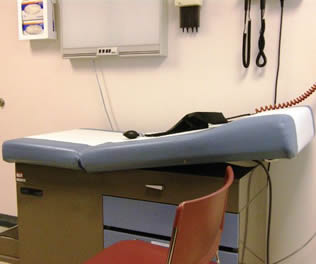 CNA Clinical Skills Test Checklist
CNA Clinical Skills Test Checklist
One of the most important things to learn and take to heart when you are getting your certification is the clinical skills test checklist. It accounts for more than half of the passing grade in some states which gives you more reason to focus on this particular aspect well. Most test takers find the theoretical exam much easier than the practical skills test, where they will be scrutinized very carefully on how well they can deliver the skills that they have learned for the few months of CNA training. Execution can sometimes be very tricky especially if you have not practiced well during your clinical sessions at the training center.
The certification exam is your day of judgment on your path to becoming a full-fledged nursing assistant. By being able to pass this test successfully, you will gain the opportunity to work as a nurse aide in any public of private health institution in your state. Taking the type of work that a health care professional will be involved with in their future employment, the state has made stringent rules on the certification exams. One will be tested carefully if they really know the nature of the undertaking that lies ahead.
This can be determined more carefully during the clinical skills test which can usually be the second part of the certification exam. In this test, you will be asked to demonstrate predetermined or randomly selected skills which you have learned during your training. It is at this point where you will be assessed on whether you can really do the tasks that shall be demanded from you once you get hired.
You may be tested on any of the following skills depending on the state where you will be taking your exam: Hand washing, assisting patients with the use of a bedpan, using transfer belts for ambulating patients, cleaning dentures both upper and lower, feeding, dressing, and giving bed baths to patients, giving passive types of exercises to the patient, positioning the patient on his or her side, putting snit-embolism stockings to the patient, counting a patient’s radial pulse and respiration, using protective personal equipment, measuring solid and liquid outputs of the patient, determining a patient’s blood pressure, providing nail, mouth and foot care to the patient, giving catheter and perineal care to the patient, and transferring a patient to a wheelchair with the use of transfer belt.
Mastering each of these CNA skills is very important if your state requires you to perform randomly selected skills during the certification exams. You need to pay careful attention to each and every task that you are required to do as well as perform all of the required skills with ease and perfection. It will be the only way to make sure that you pass the test. Prepare your mind well before taking the exam. Panic, which is a very common experience among first time test takers, can be avoided if you are mentally as well as physically prepared to do all of the said tasks.
CNA Clinical Skills Help
Here is a list of the common CNA skills & tasks you will perform as a certified nursing assistant:
- Ambulate Resident Using a Gait Belt
- Applying TED Hose
- Assisting Residents With The Use Of Bedpans
- Catheter Care for a Female
- Cleaning Dentures
- Communication Skills
- Communicating With Patients Who Have Problems Speaking
- Communicating With the Hearing Impaired
- Dressing a Patient With a Weak Side
- Dressing a Dependent Patient
- Empty Urinary Drainage Bag and Measuring Output
- Feeding a Resident
- Giving a Partial Bed Bath
- Hand Washing Techniques
- Helping Assist a Patient with Dementia
- Indirect Care Skills
- Making an Occupied Bed
- Measure Height and Weight of a Supine Patient
- Measure and Record Blood Pressure
- Measure and Record Apical Pulse
- Measuring and Recording Radial Pulse
- Measure Breathing Rate
- Provide Foot Care
- Provide Oral Care
- Provide Perineal Care
- Performing Fingernail Care
- Positioning a Patient On Their Side
- Range of Motion Exercises
- Range of Motion for Elbow and Wrist
- Range of Motion for One Shoulder
- Range of Motion Exercises for the Knee and Ankle
- Transfer from a Bed to Wheelchair
- Wearing Personal Protective Equipment (PPE)
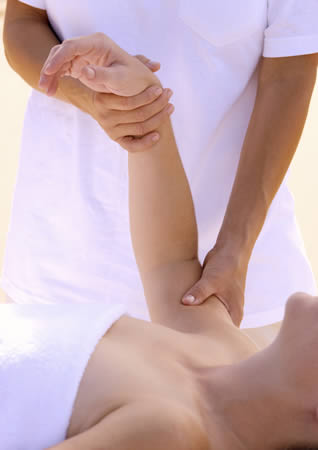 Next, you have to place the patient on a position which will make them easily accessible to you and this can be accomplished in a variety of forms: the high-Fowler position, the supine position, and the semi-Fowler position. Whichever of these positions are comfortable to your patient should be the one adapted.
Next, you have to place the patient on a position which will make them easily accessible to you and this can be accomplished in a variety of forms: the high-Fowler position, the supine position, and the semi-Fowler position. Whichever of these positions are comfortable to your patient should be the one adapted. After this, raise the level of the patient’s head up to a 30-degree angle to make it more comfortable for you and for them to get the cleaning process done. Do not try to raise the head of the patient at a greater angle as this may cause them some discomfort.
After this, raise the level of the patient’s head up to a 30-degree angle to make it more comfortable for you and for them to get the cleaning process done. Do not try to raise the head of the patient at a greater angle as this may cause them some discomfort.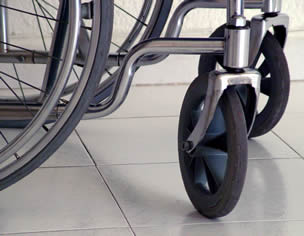 there as well. They must provide the patient with the step-by-step process of how the procedure will be carried out before, during, and after the procedure is done. This will help the patient to become more relaxed and cooperative throughout the process.
there as well. They must provide the patient with the step-by-step process of how the procedure will be carried out before, during, and after the procedure is done. This will help the patient to become more relaxed and cooperative throughout the process.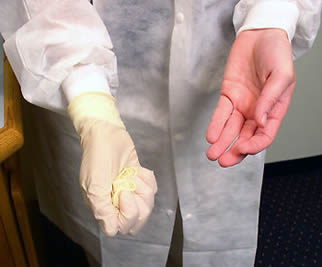 They are made to be used only once and then to be thrown into the trash after use.
They are made to be used only once and then to be thrown into the trash after use.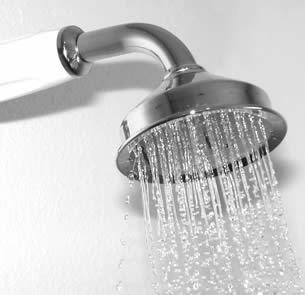 After this, the CNA then proceeds to the bed of the patient and removes any dirty underpads from the patient. Replace the waterproof underpads with fresh and clean ones in order to avoid getting the bed wet from the process. The nurse aide then asks the patient to part their legs in order to gain access to the front perineal area more easily. Part the folds of the labia and clean the inner sides using a clean piece of washcloth which has been dipped in warm water and applied with soap.
After this, the CNA then proceeds to the bed of the patient and removes any dirty underpads from the patient. Replace the waterproof underpads with fresh and clean ones in order to avoid getting the bed wet from the process. The nurse aide then asks the patient to part their legs in order to gain access to the front perineal area more easily. Part the folds of the labia and clean the inner sides using a clean piece of washcloth which has been dipped in warm water and applied with soap.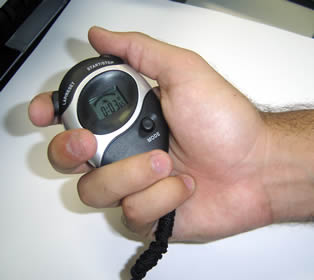
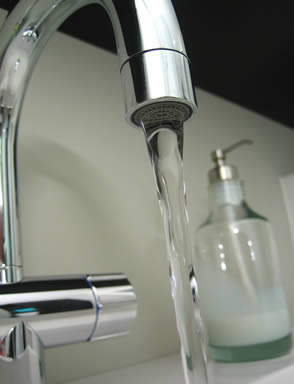 The first step is to introduce yourself to the patient and to explain to them why you are there. Try to give them a mental picture of the step-by-step process which will be performed and try to inform them of the materials that will be used.
The first step is to introduce yourself to the patient and to explain to them why you are there. Try to give them a mental picture of the step-by-step process which will be performed and try to inform them of the materials that will be used.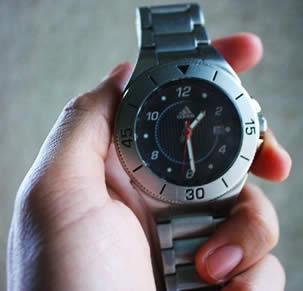 It is important to remember that when you are performing this particular skill, you should incorporate both the direct and the indirect skills that have been taught during the training. There are some who tend to forget about the indirect skills and focus more on the actual taking of the radial pulse. You should take care to incorporate indirect skills during the process if you want to pass the exam or if you want to retain your job. Respecting the privacy, independence, and the safety of your patient are all as important as the direct skill themselves.
It is important to remember that when you are performing this particular skill, you should incorporate both the direct and the indirect skills that have been taught during the training. There are some who tend to forget about the indirect skills and focus more on the actual taking of the radial pulse. You should take care to incorporate indirect skills during the process if you want to pass the exam or if you want to retain your job. Respecting the privacy, independence, and the safety of your patient are all as important as the direct skill themselves. After this, wash your hands thoroughly and put on your personal protective equipment. This is to avoid the spread of infection and to protect the patient as well.
After this, wash your hands thoroughly and put on your personal protective equipment. This is to avoid the spread of infection and to protect the patient as well.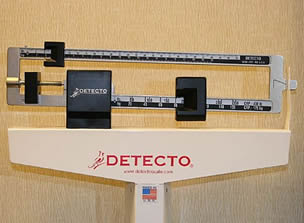 You and the other employee must both wash your hands first and use the appropriate personal protective equipment before handling the patient. Then lower the bed if it is raised on one side until it is on a parallel position with the floor.
You and the other employee must both wash your hands first and use the appropriate personal protective equipment before handling the patient. Then lower the bed if it is raised on one side until it is on a parallel position with the floor.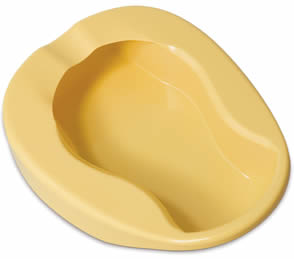 As with other tasks, you will need to greet and introduce yourself to the resident after you entered the room. Make sure that you explain your task very well to the patient so that he would not be surprised when you start with the bedpan. Tell them exactly what you will be doing in each single step of the procedure and then ask them if you can pull the curtains down in order to provide them with some privacy. You always have to ask for their permission before doing anything in their room.
As with other tasks, you will need to greet and introduce yourself to the resident after you entered the room. Make sure that you explain your task very well to the patient so that he would not be surprised when you start with the bedpan. Tell them exactly what you will be doing in each single step of the procedure and then ask them if you can pull the curtains down in order to provide them with some privacy. You always have to ask for their permission before doing anything in their room.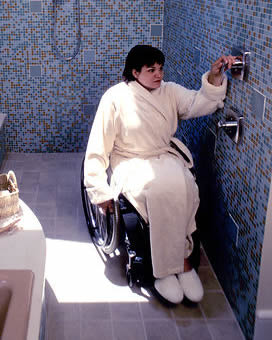 The next step is to tell your patient that you will be undressing them first on their weak side. Depending therefore in which side the patient’s weaker part is, you will start to undress them first. Do not try to do all of the undressing by you and get the patient to participate as much as they can on the whole process. Ask them also if they want to undress by themselves or if they want sufficient privacy while they do so. You should try to maintain as much space as can be comfortable for the patient. Encourage them to take initiative on their own and to exercise themselves in the care of themselves.
The next step is to tell your patient that you will be undressing them first on their weak side. Depending therefore in which side the patient’s weaker part is, you will start to undress them first. Do not try to do all of the undressing by you and get the patient to participate as much as they can on the whole process. Ask them also if they want to undress by themselves or if they want sufficient privacy while they do so. You should try to maintain as much space as can be comfortable for the patient. Encourage them to take initiative on their own and to exercise themselves in the care of themselves.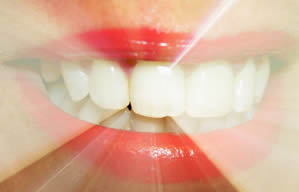 The next step is to bring the two pieces of dentures to the cleaning area or the sink and then line the bottom of the sink with a washcloth. Try to get a warm temperature of water by mixing the hot and cold waters and then try to fill the sink partly with the warm water. After that, clean the dentures using a regular toothbrush and denture cleaning substances. Remove as much dirt as you can from the dentures and try to contact all of the surfaces in the denture. The most important parts to clean are those which come in direct contact with the gums as any leftover bacteria or food can cause infection.
The next step is to bring the two pieces of dentures to the cleaning area or the sink and then line the bottom of the sink with a washcloth. Try to get a warm temperature of water by mixing the hot and cold waters and then try to fill the sink partly with the warm water. After that, clean the dentures using a regular toothbrush and denture cleaning substances. Remove as much dirt as you can from the dentures and try to contact all of the surfaces in the denture. The most important parts to clean are those which come in direct contact with the gums as any leftover bacteria or food can cause infection.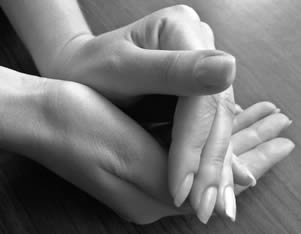 The next step is to let the patient soak their fingers in warm water making sure that they are in a comfortable temperature for the patient. Let them do this for a couple of minutes to loosen up the dirt which may be on the nails.
The next step is to let the patient soak their fingers in warm water making sure that they are in a comfortable temperature for the patient. Let them do this for a couple of minutes to loosen up the dirt which may be on the nails. m,The next step is to wash your hands and wear personal protective equipment. This will help to prevent the spread of infection or disease to your patient. Then, with the patient in a lying position, raise the patient’s knee toward their torso and then back to the mattress. This will provide a flexion and extension exercise to the patient’s hips and knees will help maintain flexibility and blood circulation.
m,The next step is to wash your hands and wear personal protective equipment. This will help to prevent the spread of infection or disease to your patient. Then, with the patient in a lying position, raise the patient’s knee toward their torso and then back to the mattress. This will provide a flexion and extension exercise to the patient’s hips and knees will help maintain flexibility and blood circulation.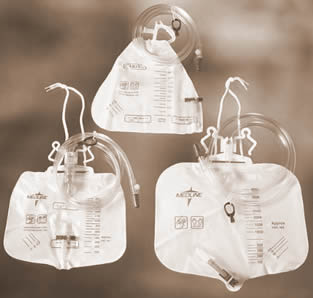 To perform this activity, do the following steps. First, you have to greet the resident by his or her name and then introduce yourself and your purpose of coming to their room. Try to inform the resident about the necessary steps that will be taken in order to empty their urinary drainage bag as well as measure and record their output. After that, you should proceed to wash your hands thoroughly and then put on a fresh set of gloves. The gloves are important when handling the urinary drainage bag, graduate, and bedpan for infection control.
To perform this activity, do the following steps. First, you have to greet the resident by his or her name and then introduce yourself and your purpose of coming to their room. Try to inform the resident about the necessary steps that will be taken in order to empty their urinary drainage bag as well as measure and record their output. After that, you should proceed to wash your hands thoroughly and then put on a fresh set of gloves. The gloves are important when handling the urinary drainage bag, graduate, and bedpan for infection control.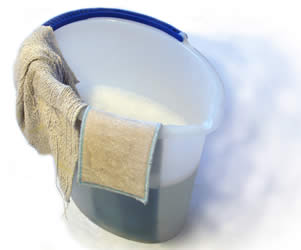 The next step is to prepare the room to provide the patient with sufficient privacy. Pull the curtains down on his windows or close the doors to avoid any untoward incidents. You should also clean the area by removing any unneeded equipment from the bed. After that, ask them to remove their clothes if they are capable or help them out with the process if they cannot. Give them enough independence in this task to their level of ability in order to develop their confidence and independence.
The next step is to prepare the room to provide the patient with sufficient privacy. Pull the curtains down on his windows or close the doors to avoid any untoward incidents. You should also clean the area by removing any unneeded equipment from the bed. After that, ask them to remove their clothes if they are capable or help them out with the process if they cannot. Give them enough independence in this task to their level of ability in order to develop their confidence and independence.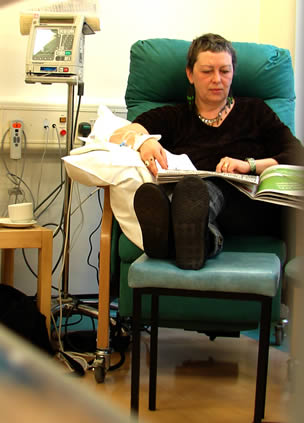 Next, you have to make sure that you are providing sufficient support for the weak arm of the resident while you are undressing and afterwards, dressing them. You should dress the weak arm first taking care that you perform all the necessary steps to lessen the amount of stress that you will put in it while dressing. Make sure that you have gathered up the sleeve of the clothing before trying to put their arm in it. Afterwards, you can proceed with the other pieces of clothing such as the pants and the socks. Do not try to overextend the legs and arms of the resident.
Next, you have to make sure that you are providing sufficient support for the weak arm of the resident while you are undressing and afterwards, dressing them. You should dress the weak arm first taking care that you perform all the necessary steps to lessen the amount of stress that you will put in it while dressing. Make sure that you have gathered up the sleeve of the clothing before trying to put their arm in it. Afterwards, you can proceed with the other pieces of clothing such as the pants and the socks. Do not try to overextend the legs and arms of the resident.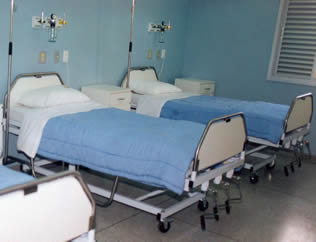 Elevate the bed so you can move the patient on a side lying position much easier. Raise the handrails on the side of the bed so as to ensure your patient’s safety. Make sure that you are telling the resident all the while what you will be doing next so that he will not be taken by surprise when you move his body suddenly.
Elevate the bed so you can move the patient on a side lying position much easier. Raise the handrails on the side of the bed so as to ensure your patient’s safety. Make sure that you are telling the resident all the while what you will be doing next so that he will not be taken by surprise when you move his body suddenly.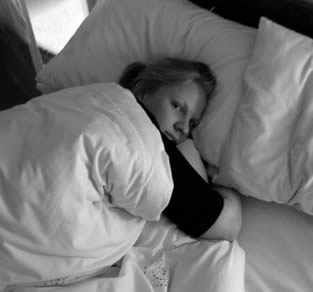 First, you will have to greet and introduce yourself to the patient as you enter his or her room. You will also have to explain what procedure you will be doing, which is to change his sheets. Letting the patient know what will be done will help him relax rather than having him anticipate what you will be doing. It will also provide an outlet for you to get a permission to do so. After this, proceed to washing your hands properly in order to help prevent contagious diseases from spreading to your patient. Wear a fresh pair of gloves before handling any of the patient’s things or bed sheets.
First, you will have to greet and introduce yourself to the patient as you enter his or her room. You will also have to explain what procedure you will be doing, which is to change his sheets. Letting the patient know what will be done will help him relax rather than having him anticipate what you will be doing. It will also provide an outlet for you to get a permission to do so. After this, proceed to washing your hands properly in order to help prevent contagious diseases from spreading to your patient. Wear a fresh pair of gloves before handling any of the patient’s things or bed sheets.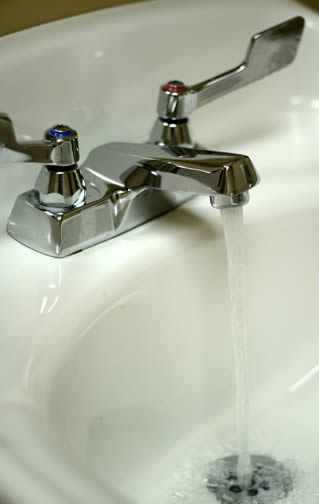 To start washing your hands, you need first to remove all jewelries and accessories that you may have on your wrists or hands. This is to be better able to remove all the dirt, both visible and invisible, which may be hiding on hard to reach areas as well as to prevent any of those which are in your accessories from contaminating the patient. The sweat that accumulates on such accessories are good breeding grounds for some bacteria which may not be removed if you wash your hands wearing them.
To start washing your hands, you need first to remove all jewelries and accessories that you may have on your wrists or hands. This is to be better able to remove all the dirt, both visible and invisible, which may be hiding on hard to reach areas as well as to prevent any of those which are in your accessories from contaminating the patient. The sweat that accumulates on such accessories are good breeding grounds for some bacteria which may not be removed if you wash your hands wearing them. Start by washing your hands and cleaning your equipment. Make sure that you also use the proper personal protective equipment for the procedure. After this, make sure that your patient is in a very peaceful and comfortable surroundings by turning down the volume of the radio or by closing the door to eliminate the noise coming from outside the room. Then, select the appropriate size of cuffs that you will be using on the patient. Wrap it around the arm of the patient just above the elbow area.
Start by washing your hands and cleaning your equipment. Make sure that you also use the proper personal protective equipment for the procedure. After this, make sure that your patient is in a very peaceful and comfortable surroundings by turning down the volume of the radio or by closing the door to eliminate the noise coming from outside the room. Then, select the appropriate size of cuffs that you will be using on the patient. Wrap it around the arm of the patient just above the elbow area.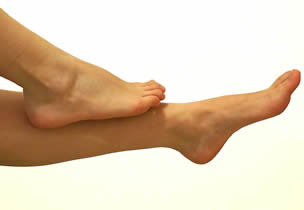 The next thing is to wash your hands and use the proper protective equipment for the procedure. Get the patient on a comfortable sitting position but avoid having their foot touch the bare floor.
The next thing is to wash your hands and use the proper protective equipment for the procedure. Get the patient on a comfortable sitting position but avoid having their foot touch the bare floor. – S1 – it is the sound that can be heard during the closure of the tricuspid and mitral valves at the end of the filling of the ventricles and just prior to the start of systolic contraction
– S1 – it is the sound that can be heard during the closure of the tricuspid and mitral valves at the end of the filling of the ventricles and just prior to the start of systolic contraction everything that they can in order to make the patient comfortable and feel as if they are in their own home. An important way to do this is to show respect at all times. If the patient is having a difficult time understanding your instructions, try to speak more slowly and clearly. You can also try using easier words to help them understand.
everything that they can in order to make the patient comfortable and feel as if they are in their own home. An important way to do this is to show respect at all times. If the patient is having a difficult time understanding your instructions, try to speak more slowly and clearly. You can also try using easier words to help them understand. The next thing to remember is that patients who suffer from memory problems do not have the capacity to process too much information. Therefore, a nurse aide must be as concise and to the point when asking the patient questions or when stating some instructions to them. The patient may easily get upset or irritated when there is too much information being offered to them at one time. The worker must therefore try to make it as easy as possible for the patient to grasp what they are saying. Do not talk down to the patient or express your irritation if the patient does not seem to understand or pay attention to what you are saying at times.
The next thing to remember is that patients who suffer from memory problems do not have the capacity to process too much information. Therefore, a nurse aide must be as concise and to the point when asking the patient questions or when stating some instructions to them. The patient may easily get upset or irritated when there is too much information being offered to them at one time. The worker must therefore try to make it as easy as possible for the patient to grasp what they are saying. Do not talk down to the patient or express your irritation if the patient does not seem to understand or pay attention to what you are saying at times.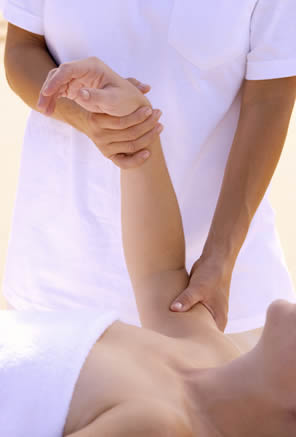 After all of these introductions, wash your hands thoroughly and wear the appropriate personal protective equipment for the proper handling of the patient. Place the patient in a comfortable position and make sure that you have addressed their safety and privacy concerns. It is important their preferences should also be taken into consideration when doing this process. Support the patient’s left or right extremity depending on which arm is to be exercised. Bend and extend their elbows at the joints in order to provide flexion and extension exercises to the patient’s arm. Ask them if they are feeling any pain or discomfort during the process and make sure that you do not force or overextend the patient’s extremities.
After all of these introductions, wash your hands thoroughly and wear the appropriate personal protective equipment for the proper handling of the patient. Place the patient in a comfortable position and make sure that you have addressed their safety and privacy concerns. It is important their preferences should also be taken into consideration when doing this process. Support the patient’s left or right extremity depending on which arm is to be exercised. Bend and extend their elbows at the joints in order to provide flexion and extension exercises to the patient’s arm. Ask them if they are feeling any pain or discomfort during the process and make sure that you do not force or overextend the patient’s extremities.
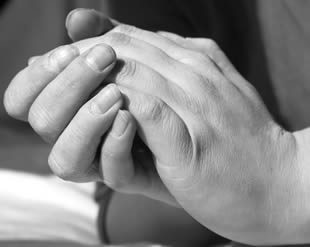
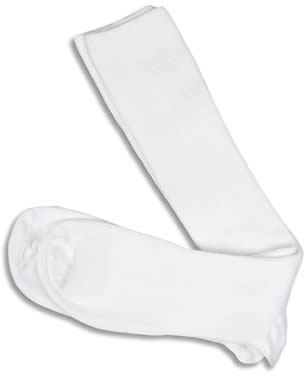 Next, you should first ask your patient or determine for yourself whether they have any allergic reaction to things that contain latex. This is an important factor since the patient will be wearing the stocking for an extended period of time and any allergic reaction to latex will significantly increase their discomfort. If they do not have any then proceed to the application of the stockings. Take note of the size of the stockings and the legs of the patient. Are they compatible with each other or is it too large or small for the patient? Afterwards, put the patient in a supine position and then proceed to dry the legs of the patient with talcum powder to give them a comfortable time wearing the stockings.
Next, you should first ask your patient or determine for yourself whether they have any allergic reaction to things that contain latex. This is an important factor since the patient will be wearing the stocking for an extended period of time and any allergic reaction to latex will significantly increase their discomfort. If they do not have any then proceed to the application of the stockings. Take note of the size of the stockings and the legs of the patient. Are they compatible with each other or is it too large or small for the patient? Afterwards, put the patient in a supine position and then proceed to dry the legs of the patient with talcum powder to give them a comfortable time wearing the stockings. After this, sit on a chair in front of the resident in order to feed them. Ask the resident if they want to use a bib or a napkin in order to protect their clothing from any accidental spillage before feeding them. Use the appropriate size of spoon for feeding the resident. Try to let the resident take a sip of liquid at least every two or three spoons of food. Give them the time to chew their food thoroughly and to swallow it before offering the next spoonful of food. As the resident is eating, try to engage them in a light conversation in order to lighten their mood and help their appetite.
After this, sit on a chair in front of the resident in order to feed them. Ask the resident if they want to use a bib or a napkin in order to protect their clothing from any accidental spillage before feeding them. Use the appropriate size of spoon for feeding the resident. Try to let the resident take a sip of liquid at least every two or three spoons of food. Give them the time to chew their food thoroughly and to swallow it before offering the next spoonful of food. As the resident is eating, try to engage them in a light conversation in order to lighten their mood and help their appetite.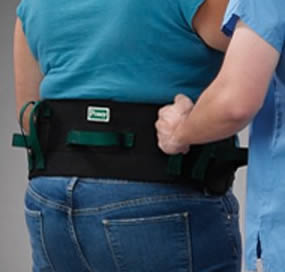 The next step is to remove any object which may cause your patient to slip when he or she stands on the bedside. Put the appropriate footwear also, ones which have a greater traction in order to help avoid any slipping accidents while they are walking. Lower the bed so that his or her feet will be touching the floor when they sit on the bedside. This will make it easier not just for them, but also for you to help them stand from their sitting position.
The next step is to remove any object which may cause your patient to slip when he or she stands on the bedside. Put the appropriate footwear also, ones which have a greater traction in order to help avoid any slipping accidents while they are walking. Lower the bed so that his or her feet will be touching the floor when they sit on the bedside. This will make it easier not just for them, but also for you to help them stand from their sitting position.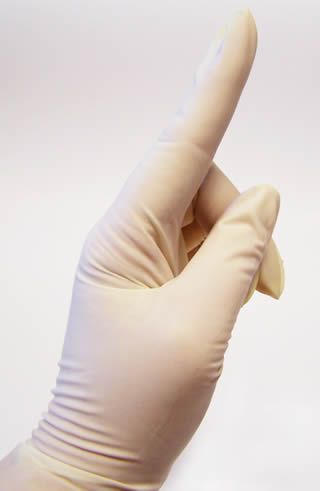 The first is about communication skills. The important thing that you will need to learn about this skill is the proper way of communicating with a resident. You need to give them the proper respect that is due to them. It is important not to offend them by addressing them in an informal or familiar way. You also need to greet and introduce yourself when you enter their room and explain to them why you are there. Discuss to them the process that you will be performing so they will not feel violated and for them to understand the process.
The first is about communication skills. The important thing that you will need to learn about this skill is the proper way of communicating with a resident. You need to give them the proper respect that is due to them. It is important not to offend them by addressing them in an informal or familiar way. You also need to greet and introduce yourself when you enter their room and explain to them why you are there. Discuss to them the process that you will be performing so they will not feel violated and for them to understand the process.